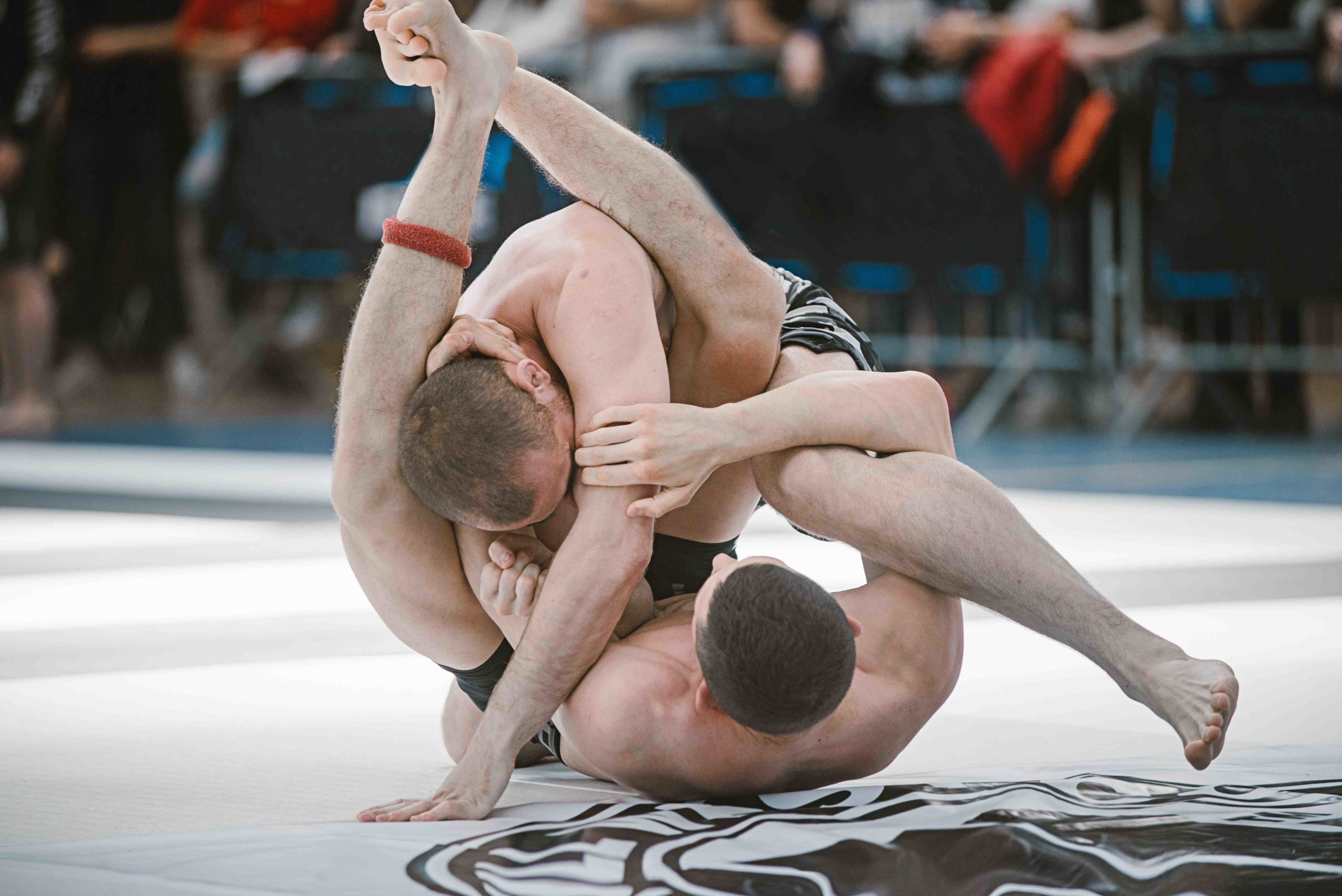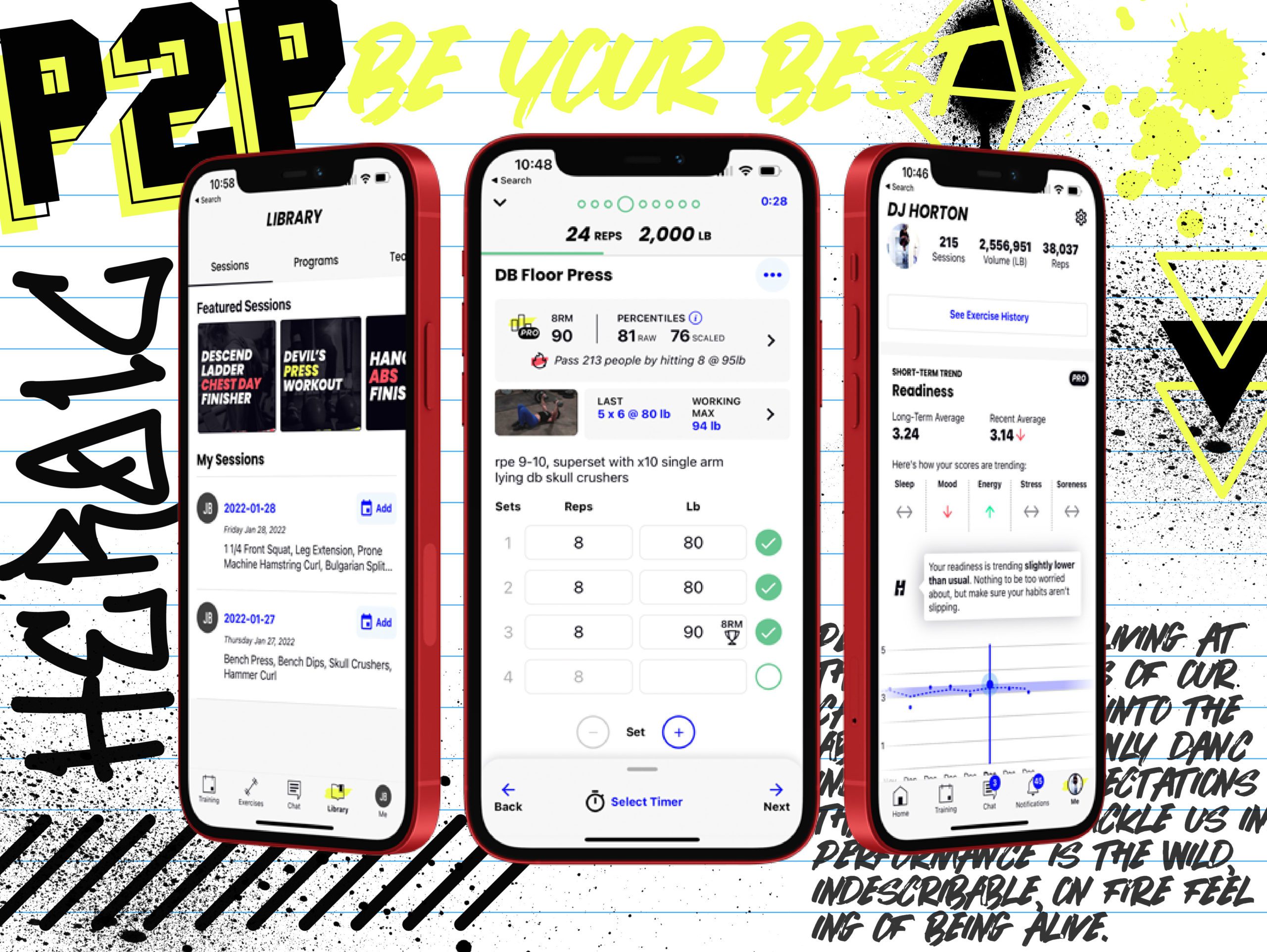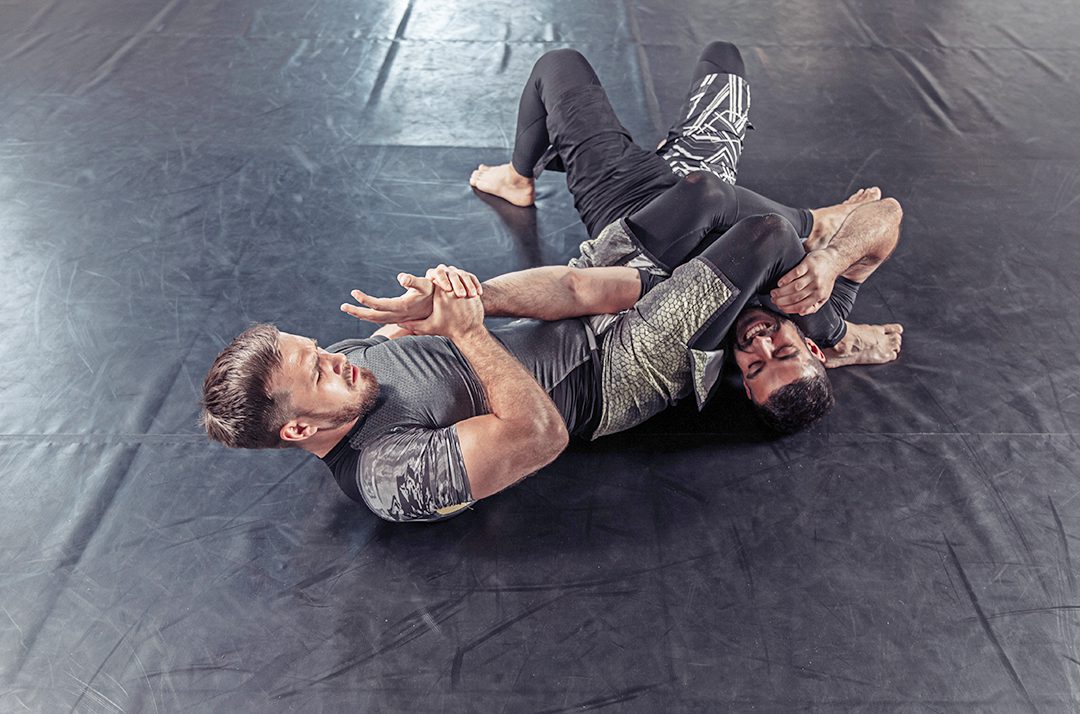Get a Grip: Strength Training for Grappling, Wrestling, & Martial Arts

Boost your strength and performance on the mats, be it Brazilian Jiu Jitsu, Judo or wrestling, by mastering these four fundamental movement patterns in the gym and organizing them properly into your training.
Cathal O’Brien is a personal trainer and S&C coach currently awaiting acceptance to undertake his Doctorate in Human Performance and Innovation. In this blog, he outlines the top weight training movement categories for fighters and how to work them into your training routine: hip hinge, knee flexion, upper body push and upper body pull.

Become a More Confident Fighter with Weight Training
Do you find it difficult to escape certain positions or keep top pressure down on your opponent? Or if you do happen to escape or retain a position, are you completely gassed out because you had to use all of your strength and energy to stay in place?
How do you work through the immense pump in your forearms, biceps, shoulders and neck during drilling and sparring rounds? Do you question your strength on the mats after grappling training?
If you’re like me and your answer to the above questions is a resounding “YES!”, then you may need to add some strength training to bolster your grappling performance. I’m going to guide you through the why and how of adding some gym-based strength work to your training schedule.
By becoming a physically stronger grappler, you can focus on improving your skills on the mats while relying on your gym-built strength to support your grappling-specific training.
Four Fundamental Strength Training Exercises for Grappling or Wrestling
Before jumping into a workout you saw your favorite grappler do, we need to strip it back to the basics. For the majority of grapplers, there are four fundamental movement patterns we can use in the gym that will positively impact your performance on the mats:
- Hip hinge
- Knee flexion
- Upper body push
- Upper body pull
Hip Hinge
Think of your start position in a match/sparring: your hips are back, knees bent to some degree and your back is closer to being parallel to the floor to avoid being taken down easily (which would happen if you stood upright). Stronger glutes, hamstrings and lower back muscles are crucial for this!
Exercises that can promote strength in these positions are known as hip-dominant movements, such as a deadlift, Romanian deadlift or single leg deadlift.
Knee Flexion
As you shoot for takedowns like double-legs, your knees bend, or flex, to allow you to get down low enough to wrap up your opponent. To improve your strength in these positions, you’ll need to strengthen your quads, glutes, hamstrings and calves.
Examples of good exercises for this would be squats and any variation of a squat: front squats, back squats, lunges, goblet squats, etc.
You Work too Hard to Not See Progress
Find Your Perfect Training Plan
Options for Every Goal
Training plans from real coaches covering any goal, fitness level, and number of sessions per week.
The Best Coaches
Get coached by the best. Olympians, ex-NFL stars, Titan Games Winners, Sport Scientists and more.
Starting at $1/ day
With many options including a free 7 day trial, you can try out programming before you commit.
Upper Body Push
To make frames on our opponents, or to put pressure on their guard, pushing strength in the chest, shoulder and triceps muscles is key. You can use strong pushing power to keep an opponent pinned or create spaces to start your own escapes.
Exercises like the bench press, strict press, or push ups will improve your upper body pushing strength.
Upper Body Pull
Every time you engage with your opponent, whether it be making grips or pulling them closer to throw or drag, you’re using your back muscles — think traps, rhomboids and lats. You’re also using your forearms and biceps extensively here.
Exercises to help improve your pulling strength include variations of rows and pull-ups.
Level Up Your Training
With TrainHeroic’s immersive training app
TrainHeroic does everything you wish your old gym notebook could do.
Take the guesswork out of training with built-in exercise instruction and basic training programs. Compete against yourself and others. Track your performance and readiness. Smash your goals.

How to Structure Your Strength Workouts With Your Grappling Sessions
Now that you know which gym-based movements can be used to improve your strength for grappling, it’s time to learn how you use them. This is a very important aspect of managing your sport and gym-training balance.
If you’re new to strength training, I recommend that you train 2-3 times per week and complete a full-body routine (covering the four movements above) in each of those sessions.
The easiest way to start is by picking an example exercise from each of the movement patterns above and performing 2-3 sets of each exercise at a weight that feels about 70% effort. As you get stronger performing these lifts, you can up the effort level over time.
If your goal is to build maximum strength, I’d recommend lifting between 5-8 reps per set. If you’re looking to build muscle size, opt for a weight that will allow you to lift 8-12 reps.
It’s important to organize your training so you can rest appropriately between sessions.
You don’t want to be going straight from one session to the other. Rest is key to making improvements! I prefer to organize my gym sessions away from my grappling sessions so my training load (both grappling and strength) isn’t too high and won’t negatively impact my recovery or sport performance.

Personally, I train Brazilian jiu-jitsu Monday, Wednesday and Saturday, and strength train on Tuesday, Thursday and Friday. This way, I can get plenty of training in both the gym and grappling while still being able to recover sufficiently. This ensures one element of training isn’t impacting the other.
If you find that your grappling is suffering as a result of the amount of strength training you’re doing, it may be wise to cut down. This could be done by splitting up the four fundamental movements over two sessions instead of completing all four in one, or minimizing the working sets you complete.
Strength training is a great asset to boost your performance on the mats, but if it’s hampering your skill training, don’t be afraid to reign it back in before it becomes a liability.
Want Training Tips, Exercise Guides & Knowledge Bombs Sent to Your Inbox?
Sign up for the FitNerd newsletter from TrainHeroic
Related articles
3 Ways to Improve Mobility Without Stretching
Are you still trying the endless foam rolling and stretching exercises to get that deep squat position? We know how important mobility is for great, or even GOOD performance. All professional athletes have some comfortability in end ranges of motion. So, what else do...
The Ultimate Guide to Lunges: Queen of all Glute Exercises
Your glutes are the largest muscle group in your body. They’re responsible for almost everything your legs do—walking, running, jumping, squatting, lunging, and just standing upright. As far as moving through space goes, strong glutes are the bedrock of overall...
A Beginner’s Guide to Steel Mace Training
Author: Jesse Grund
Mace training will make you a better mover without it’s not confining you to a fixed space or predetermined range of motion. Second, it’s an offset load with 80 to 90 percent of the weight in the head. You’re also constantly having to resist rotation, which creates greater core engagement.

Join the community
Sign up for the latest training news and updates from TrainHeroic

About TrainHeroic
Support
Made with love, sweat, protein isolate and hard work in Denver, CO
© 2021 TrainHeroic, Inc. All rights reserved.





